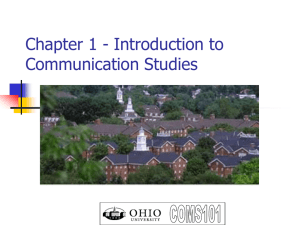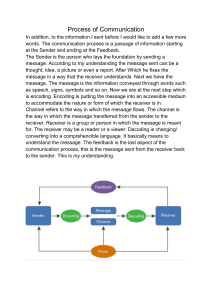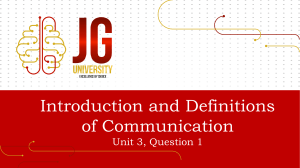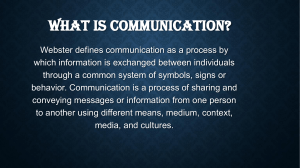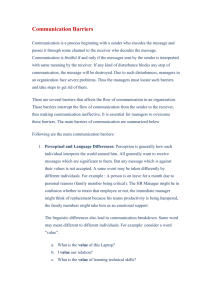Human Communication
advertisement
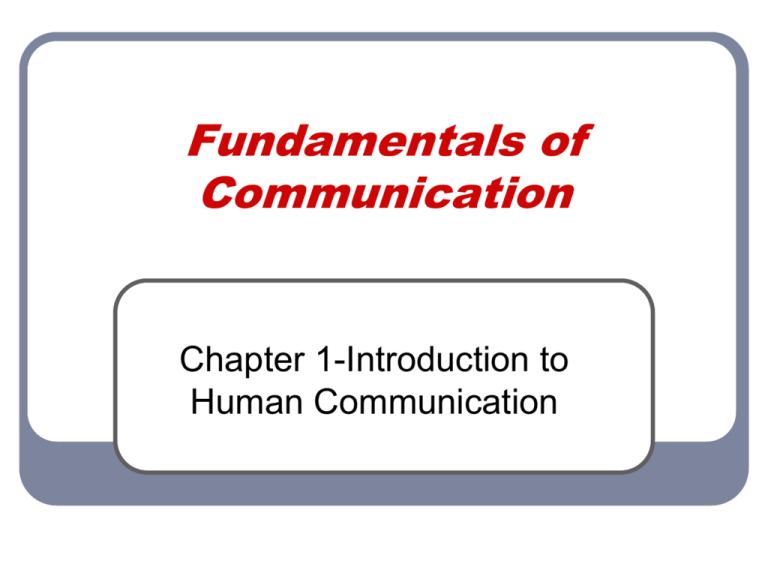
Fundamentals of Communication Chapter 1-Introduction to Human Communication The Big Picture Communication Process of Using Messages to Exchange Meaning. So, why do we study communication? Why Study Communication? Self Image Relationships Life Skills Civil Obligation Professional Success Linear Model of Communication Information Source Message Transmitter Signal Received Signal Receiver Noise Source Sender Message Receiver Message Destination Interactive Communication Model Model Copyright 1995 by Allyn and Bacon Create Your Own Model In groups, you will create a new model of communication. Create a model to represent communication without using the terms we just discussed. The model needs to include: Sender, Receiver, Message, Channel, Codes, Encoding, Decoding, Noise and Feedback The group will then present and explain the model to the class Communication Intrapersonal Interpersonal Public Mass Computer Mediated Important Resources CATA 101 Resource web page www.mmhe.com/pearson3 www.natcom.org

